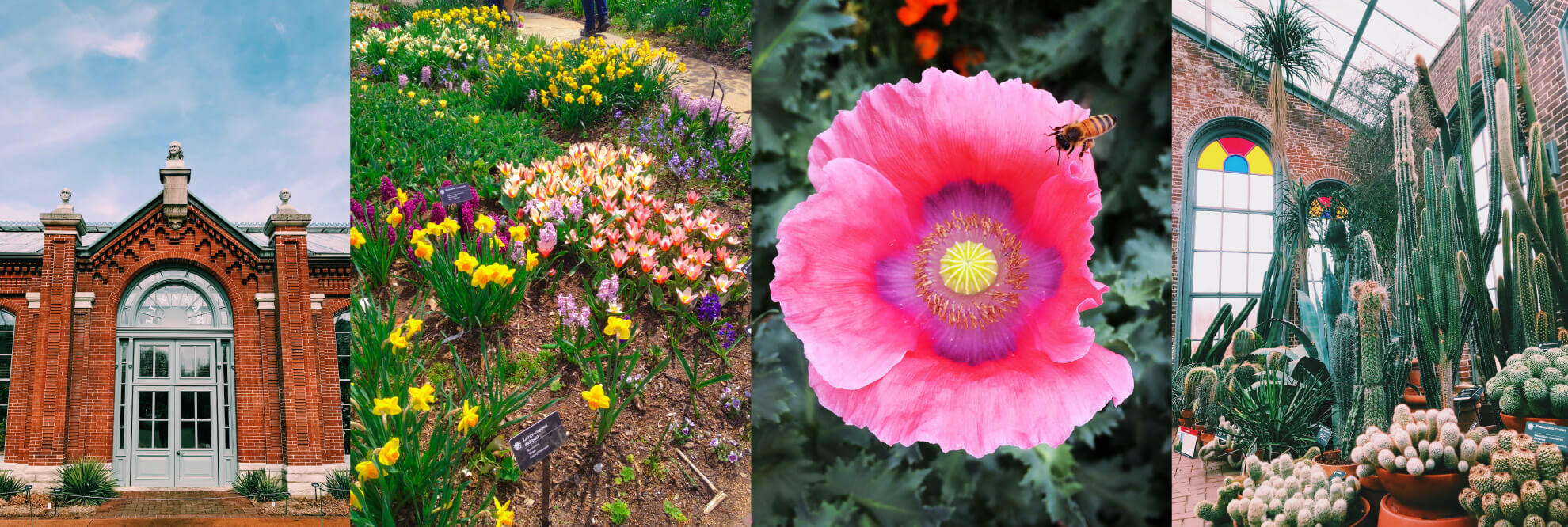
Amid the transformations of the industrial revolution, major American cities were thick with pollution. In St. Louis, coal factories burned around the clock to power the tobacco plants, steel mills, meat packers, and manufacturers. Huge black clouds hung overhead. Streetlamps were illuminated during the day.[1] And all of this caused the average St. Louis resident to inhale an estimated 15 tablespoons of soot every five days.[2]
That estimate was reported by the Missouri Botanical Garden back in 1925. The garden is the oldest in North America and home to an impressive catalogue of rare plant life, including the country’s most famous collection of orchids.
Protecting those orchids was a priority in the 1920s, and it placed the garden at the vanguard of efforts to purify the city’s air.
More than 100 years earlier, in the spring of 1818, the founder of the garden set out from what was then a tiny river town at the edge of the American frontier. Henry Shaw rode west through marshes and prairies, past sinkholes, and Native American burial grounds to the future site of the city’s verdant oasis. In that original parcel of land, he saw a vision for something resembling the great gardens of Europe.[3]
Shaw was just 18 years old at the time, but he would soon become one of the wealthiest people in St. Louis. In subsequent years, he poured his wealth into the garden, building aesthetic and research structures, expanding the herbarium by millions of specimens, and the library by hundreds of thousands of volumes.
But Shaw wouldn’t keep it all for himself. It was meant for the people of St. Louis—an oddity in an era predating the philanthropists who helped create the country’s National Park system.[4]
When the garden opened to the public in 1859 for two Sundays a year, 100,000 people crowded onto the streetcars to see the grounds and the chrysanthemum shows, which would soon grow to include azaleas, hydrangeas, dahlias, and, of course, orchids.
Horticulturalists hired by the garden traveled the globe searching for rare flora. One of them caught the attention of Charles Powell, a hobbyist who had amassed a private orchid collection while working in Panama, one of the greatest spots on the planet for such work. He gifted it in full to the garden upon his death.
Today the garden’s orchid collection includes over 6,500 plants and nearly 2,200 unique species, many of which are endangered and collected from the wild.[5]
Even though the orchid collection was kept in a greenhouse in the 1920s, the sensitivities of these plants to air pollution prompted the garden’s trustees to seek out a new home for them. The Garden became active in communicating the pollution problem to the public, as well as working to combat it.
In order to protect the precious collection in the meantime, the Garden acquired a massive tract of land that would be called “The Arboretum” at Gray Summit Missouri, 35 miles outside St. Louis. The collection was moved there in 1926 and stayed until 1958 when it was returned to the garden.
Today, the arboretum, now the Shaw Nature Reserve, comprises nearly 2,500 acres of native wetlands and prairies which, like the garden itself, has become the site of premier educational, research, and sustainability work.[6]
What began with an effort to protect the orchid and a few crude devices to measure coal particulates in the air has since grown into a mecca for conservation and plant science. So, when you next visit the Missouri Botanical Garden—to walk through the Japanese cherry blossoms, wander the English Woodland garden, sit by the waterfall in the Climatron dome, or admire the still-thriving orchids—remember all of it was propped up by those delicate little flowers.

References
[1]https://www.stltoday.com/news/local/history/nov-28-1939-the-day-black-tuesday-rolled-into-st-louis/article_00c3b6cd-ba69-5a19-b498-fbc29f9630c4.html
[2] http://www.mobot.org/mobot/archives/fulltext_images.asp
[3] https://www.missouribotanicalgarden.org/about/additional-information/our-history.aspx
[4] https://www.nps.gov/articles/philanthropy-and-the-national-parks.htm
[5]https://www.missouribotanicalgarden.org/gardens-gardening/our-garden/notable-plant-collections/orchids.aspx
[6]https://www.missouribotanicalgarden.org/visit/family-of-attractions/shaw-nature-reserve/about-shaw-nature-reserve.aspx